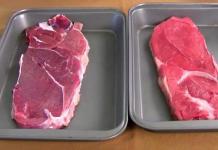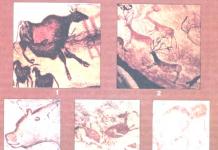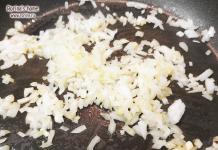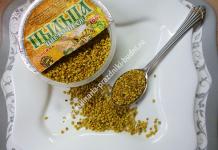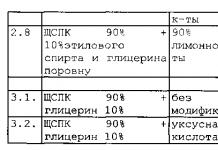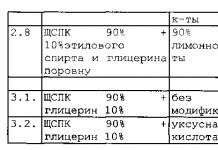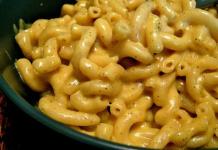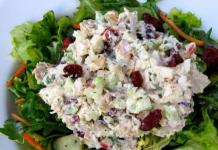Citrus fruits such as oranges, tangerines, limes and lemons are botanically called bitter oranges.
They have the same characteristics: thick peel, bright color, juicy pulp. However, these are not fruits, as is commonly believed. Such citrus fruits are classified as berries.
Such a confusing classification does not make them any less useful. Lemons remain a popular delicacy and an assistant in the fight against various ailments - the fruits contain many active biological materials that are beneficial to the human body. This is why they are so popular in home cultivation.
Different types of this plant were bred by breeders both in Russia and abroad. Their efforts were aimed at obtaining citrus crops adapted to indoor conditions, actively bearing fruit. They differ in shape, color of fruits and leaves, are smooth-bore or with thorns, tall and short, with red, yellow, green fruits, and taste not only sour, but also sweet. But the lemongrass plant, although similar in name (lemon - lemongrass), is neither a lemon nor a citrus fruit at all.
There are many notable varieties of citrus.
 Villa Franca is pyramidal in appearance, with small flowers, medium or large fruits with juicy, aromatic, fine-grained pulp.
Villa Franca is pyramidal in appearance, with small flowers, medium or large fruits with juicy, aromatic, fine-grained pulp.
Irkutsk large-fruited - the name speaks for itself. In addition, it has beautiful blooms in the form of clusters of large flowers (up to 15 buds). The weight of one fruit can even reach 1.5 kg.
Genoa is a small tree, but very productive - you can collect up to 180 fruits from an adult crop. The fruits are very tasty. Even the peel is considered edible.
Commune is one of the best species, with high yield and taste of large fruits. The trees are small, with sparse thorns. You can collect up to 60 lemons from a tree at the age of four.
Kyiv is a tall type of lemon tree with good fruiting. This is not a hybrid species, but a real lemon. Moreover, it is adapted to shady conditions.
Novogruzinsky (Novo-Afonsky) is a vigorous variety with numerous thorns, therefore it is more suitable for plantation cultivation. This is the most common variety cultivated in Georgia. The taste of the fruit is considered simply exquisite.
Kursk - can grow up to 1.8 m tall. Fruits in the third year. It has a fruit with a thin peel, measuring about 120–130 g. The hybrid is based on the Novogruzinsky lemon, but surpasses its progenitor in fertility.
Lisbon is a tall, thorny tree, very adapted to both drought and low air temperatures. The fruits are very tasty, almost without grains and with a thin peel.
Kuznera - the culture has dense thorny trees. It does not tolerate dry air well and in such conditions can shed the ovary. But, when ripened, it produces high quality lemons, the size of which reaches up to 6 cm in diameter.
Red (Cantonese) - a thorny plant, with dense foliage, bearing abundant fruit every year. But it produces small lemons (40–60 g), with thin skin and sour pulp.
Maikopsky is not a whimsical tree, it has a flexible, but symmetrical and completely thornless crown. The fruits are medium-sized (up to 140 g) with thin skin. In a year you can remove up to 700 fruits from an adult tree (20–30 years old).
Melarosa - the lemon tree is of hybrid origin and has not been found in the wild. It produces elongated fruits weighing up to 200 grams.
Mezensky is a variety with small and sparse spines, the flowers have a purple hue, the leaves are large (up to 18 cm in length), dense. A beautiful round crown forms on its own; trimming is not necessary.
Meyer is a species of mysterious origin, thought to have been pollinated by an orange. It has an orange, sometimes red, fruit color. The tree has a beautiful shape and almost no thorns. Lemon flowers smell delicious and bloom earlier than other varieties. Fruits weigh up to 150 grams, ripen by 9 months after ovary. Easily propagated both by cuttings and from seed.
 Moskovsky is a tall variety (up to 2 m), but practically thornless, with large leaves (up to 20 cm), seedless fruits, very similar in quality to Novogruzinsky.
Moskovsky is a tall variety (up to 2 m), but practically thornless, with large leaves (up to 20 cm), seedless fruits, very similar in quality to Novogruzinsky.
New Zealand - similar to the citron, has the same narrow leaves, large flowers and a prickly trunk. It produces large lemons (up to 800 grams). The peel is thick (up to 0.8 cm). The pulp is sour and juicy, with a high content of vitamin C.
Pavlovsky is very popular in indoor breeding. It is a compact bush, up to 1.5 m in height, with a round crown and branches hanging down. The branches have spines up to 2 cm long. The color is profuse and lasts up to 10 days. The flowers are solitary, with a fragrant scent. In the third year, the fruits appear and if they are not picked on time, they will continue to grow and acquire a green tint.
The weight of the fruit can reach up to 500 grams, but the peel is up to 5 mm thick. The seeds of this species are very resilient and germinate well.
Panderosa is a domestic variety of lemon tree obtained by crossing lemon and citron. It is a compact, neat bush (dwarf tree). Even in adulthood it does not exceed 1.5 m in height. Resistant to dry room air, it begins to bear fruit already in the second year after planting. It blooms with large cream flowers, but produces few fruits. The ripe fruits are large in size and can reach a weight of 400 g to 1 kg. The peel is thick and lumpy. The pulp has a pleasant taste, without excessive acidity. The variety is easy to propagate and does not require special conditions or care.
Tashkent is a medium-sized tree, with small leaves and small flowers. It bears fruit in the second year with small but abundant fruits, weighing up to 80–90 grams. The peel is thin, orange in color. The flesh is also orange and juicy. The crown does not need to be molded.
Yubileiny - obtained by grafting Tashkent and Novogruzinsky varieties. It has good shade tolerance and high yield. The fruits can ripen to gigantic sizes.
Methods for propagating citrus
 The most popular method of propagating different types of lemons is vegetative. It is divided in turn into 3 methods:
The most popular method of propagating different types of lemons is vegetative. It is divided in turn into 3 methods:
Cuttings are the most successful method of propagating lemon trees, especially for tall varieties. Indoor lemons are usually cut from spring or summer. Cut a branch with three leaves. It is better to treat the cut with a rooting stimulator. After which the cuttings are planted in the prepared soil, irrigated with water and covered with a cap (glass jar or bag) for a greenhouse effect. You need to spray with water daily. As soon as the first shoots appear, the cap can be removed.
Propagation by layering - this method allows the lemon plant to take root very well, but this method is more labor-intensive.
On a tree with fruits, choose a well-developed branch and make a ring on it. It looks like this:
- cut off the bark on the branch (about 1–2 cm);
- the exposed area is treated with a rooting stimulator;
- coated with sphagnum (swamp moss) mixed with sand;
- wrapped in a black plastic bag.
 At a certain time, roots will appear. And after 2-3 months, the branch with roots just needs to be separated and planted in a prepared pot.
At a certain time, roots will appear. And after 2-3 months, the branch with roots just needs to be separated and planted in a prepared pot.
Growing lemon indoors is possible even from a seed. To do this, you need to plant ripe fruit grains to a depth of 1–2 cm in suitable soil with drainage. Place in a warm and bright room, maintaining constant soil moisture. In two weeks the grains will germinate. The seedlings should be watered with settled water, loosened regularly, and when the leaves appear, the strongest young plants should be transplanted into a separate container. The pot needs to be covered with a glass cover, but do not forget to ventilate it every day.
When the lemon grows 15–20 cm long, it can be transplanted into another pot; this should be done as it grows. The disadvantage of this (grain) propagation is that in the future the tree still needs to be grafted so that it becomes cultivated and begins to bear fruit. Otherwise, a wild tree will grow. But, it will also be a beautiful decorative element of the interior, and with good disease resistance.
You can grow a seedling from a branch planted in a glass of water, which has given roots. Then they proceed in the same way: plant the cuttings in a container, first of small volume, and as the plant matures, transplant it into a larger one. When the tree is about 25 cm high, you can pinch off the top. Thus, its growth will be limited, which will have a positive effect on the side shoots. They also need to be pinched when they reach 25 cm. This is called bush formation. The tree will be round, with a dense crown of foliage, and buds will begin to form on the branches. The lemon is ready to form fruit.
Breeding at home
Lemon is a fastidious tree and, if not cared for properly, can begin to shed its leaves. But even if everything is in order with the foliage, achieving fruit is even more difficult. The chances increase significantly if you follow the recommendations of professional gardeners.
Soil requirements
 At the bottom of the container where the lemon tree is supposed to be planted, it is necessary to provide drainage (expanded clay, pebbles). Flower soil from the store, with humus already included in its composition, is quite suitable as a substrate. The cuttings are planted shallowly, just to cover the roots. Young lemons (up to 3 years old) are perfectly adapted to annual replanting, but for an older plant, the soil needs to be changed less often: once every 2-3 years, although it is recommended that they be sprinkled with fertile layer on top every year.
At the bottom of the container where the lemon tree is supposed to be planted, it is necessary to provide drainage (expanded clay, pebbles). Flower soil from the store, with humus already included in its composition, is quite suitable as a substrate. The cuttings are planted shallowly, just to cover the roots. Young lemons (up to 3 years old) are perfectly adapted to annual replanting, but for an older plant, the soil needs to be changed less often: once every 2-3 years, although it is recommended that they be sprinkled with fertile layer on top every year.
You can prepare the soil yourself. For this composition take:
- river sand (preferably coarse) – 1 part;
- leaf humus - 2 parts;
- cattle humus (mullein) – 1 part;
- wood ash – 0.25 parts.
Picking is done by transshipment, that is, when the grown roots are intertwined in a coma of earth, they must be replanted along with it.
How to organize lighting
Additional lighting is required for indoor plants only in winter, when daylight hours are reduced. But, if it is possible to keep the tree in cold weather at a temperature of 7 to 14 degrees, then it will fall asleep, in this case there is no need to worry about additional lighting. When the lemon is in a warm room and needs additional lighting so that the light regime reaches 10–12 hours a day, use individual light lamps or ordinary room lighting.
Rules for watering plants
 Caring for a lemon tree at home includes proper watering. It is carried out from May to September twice a day. The earth must be completely spilled. Due to proper drainage or the water drainage system used, stagnation should not occur. The water used is soft, settled, and at room temperature. In cold weather, watering is carried out much less frequently, no more than twice a week.
Caring for a lemon tree at home includes proper watering. It is carried out from May to September twice a day. The earth must be completely spilled. Due to proper drainage or the water drainage system used, stagnation should not occur. The water used is soft, settled, and at room temperature. In cold weather, watering is carried out much less frequently, no more than twice a week.
Diseases and pests
Lemon. like all plants, it is susceptible to diseases and damage by certain types of pests. Here are some signs of illness:
- leaves turn yellow and dry (requires humidity adjustment);
- leaves fall off (eaten by spider mites);
- leaves curl into a tube (in insufficient light);
- flowers and ovaries fall off (lack of moisture in the soil and air).
Lemon diseases are divided into the following:
- viral (most often incurable);
- fungal (root rot, requires transplanting to another soil);
- infectious (leaves turn red, lesions on the tree trunk are visible).
In addition to spider mites, the following pests are also dangerous:
- whitefly;
- mealyworm;
- scale insect.
For all these pests, there are commercially available therapeutic and preventive products called insecticides. Among folk recipes, garlic infusion (150 g per 1 liter of water) is often used. Leave the leaves and treat the branches of the tree with the product steeped for 5 days.
The causes of disease are most often improper plant maintenance, improper care and irregular feeding.
Feeding a citrus tree
Lemon feeding should be done 3-4 times a month, except during the winter sleep period. The volume of nutrient mixture poured into the pot should be approximately one glass per four-liter container. Recipes for mixtures used for feeding can be varied. Here are some of them:
Horse manure is used, diluted with water 1:1. For a week, this mixture is left to ferment in a tightly closed jar. And before watering, dilute it with water again in a ratio of 1:10. Cow manure (mullein) is considered worse for feeding, but if its infusion is used, it is diluted with water in a ratio of 1:15 before watering. With this method of fertilization, it is recommended to additionally water the plant twice a year with iron sulfate (3 grams per 1 liter of water) or a weak solution of potassium permanganate (0.2 grams per 1 liter of water).
Nowadays, instead of organic fertilizers such as manure, mineral fertilizers are more often used, containing in their composition all the elements necessary for a given crop. The universal composition, which can be purchased at a flower shop, is called “Citrus mixture”, “Citrus happiness”. It includes: sodium, phosphorus, potassium, iron, copper, manganese, magnesium, boron - all the components necessary for lemon for best growth and fruiting.
Let's summarize some basic rules that need to be remembered when caring for indoor lemons:

Although lemon has its own character and cultivation characteristics, cultivating it at home is a doable task, and the result is worth the effort.
Dear site visitors, friends!
I do not engage in mass propagation of planting material; I only offer small quantities of surplus plants for sale. Sales upon availability. I am against copying my photos.
Lemons \ C. Limon \ And hybrids
Femminello is a group of varieties of Italian origin, high-yielding, excellent taste.
Lemon "Fimminello Comune" 500-700r
C. limon "Femminello comune"




An ancient Italian variety that is very popular. Our family has been growing this lemon for about 18 years. One of the best in terms of fruit quality and yield. At the age of 4-5 years, up to 50 fruits can be collected from one tree (with good care). The size of the fruit is large, oval in shape, seeds are rare. The fruit nipple is rough, small, slightly flattened. The pulp is very juicy, tender, aromatic, the taste of the juice is sour and pleasant. The peel is smooth, slightly bumpy, medium thickness. The variety was brought to Sukhumi from Italy in 1928.
Lemon "Fimminello Comune" nucleated (Italy) 500-700 RUR
C. limon "Femminello comune nucellare"
An ancient Italian variety that is very popular. One of the best in terms of fruit quality and yield. At the age of 4-5 years, up to 50 fruits can be collected from one tree (with good care). The size of the fruit is large, oval in shape, seeds are rare. The fruit nipple is rough, small, slightly flattened. The pulp is very juicy, tender, aromatic, the taste of the juice is sour and pleasant. The peel is smooth, slightly bumpy, medium thickness. The “nucellar” clone (nucellare NL46-644) was obtained from the InstituteAgriculture CRA" - (CRA-Istituto Sperimentale), in the city of Acireale, in 1946.
Lemon "Femminello Adamo" 500 RUR
C. limon "Femminello Adamo"
Variety from the Mascali region, Giarre, Italy. The tree is medium-sized, growing upward rather than spreading. Young shoots are green and purple, flowers are white to purple. This variety is resistant to malsecco with very good balanced productivity. The fruit is elliptical, medium size (120-130g) with a small spout. The skin is medium thick and bright yellow in color. The pulp is very sour (more than 6% acid) and has excellent taste. The fruits contain practically no seeds and ripen gradually from November to January.
Lemon "Femminello Zagara Bianca" 500 RUR
C. limon "Femminello Zagara Bianca"

The variety comes from Italy, most likely a bud mutation from the cultivar "Femminello comune", known since ancient times and still widely grown in Sicily. The tree has a vigorous growth rate, the leaves are elliptical, slightly rounded at the end, and sometimes have thorns on the branches. The variety is very productive. Blooms with white flowers,(as the words "zagara bianca" in the title suggest). Medium-sized fruits (130 - 160 g) andmThey have a shape characteristic of lemons with a rounded base, the peel is yellow, smooth, and of medium thickness. The pulp is yellow, very juicy and sour, of excellent quality.There are usually 10 segments, with an average number of seeds.The fruits ripen from October to December and withstand transportation well.This is a real commercial Italian lemon variety.
Lemon "Femminello Incapucciato" 500 rub.
C. limon "Femminello Incappucciato"
Origin unknown. A widely cultivated, cold-resistant, late-ripening variety. Productivity is average. The leaves have a tendency to “turn out” in the shape of a boat. From the Italian "incappucciato" can be translated with some stretch as "cap-like, hood-like".
Lemon "Femminello Carrubaro" 500 rub.
C. limon "Femminello Carrubaro"
The lemon "Femminello Carrubaro" arose as a result of a spontaneous mutation of the widespread variety "Femminello comune". The word Carrubaro is the local Italian name for the plant Ceratonia siliqua L. or Carob, widespread in Sicily. This variety of lemon resembles this tree in that its flowers and fruits appear in clusters. And young shoots are purple in color (as are small ovaries). Powerful tree. Highly productive remontant variety.
Lemon "Femminello Santa Teresa" 450-500 rub.
C. limon "Femminello Santa Teresa"
The Italian variety "Santa Teresa" was found in Santa Teresa di Riva, Sicily, Italy and was selected from the Femminello group of lemons. Femminello is the most widely grown group of lemons in Italy. It is grown in Turkey, where it is distributed under the name "Italian", as well as in Argentina. The fruits are of high quality, shelf-stable, and the yield is high. Fruit weight up to 90 g. The peel is slightly rough, aromatic, rich in essential oils, greenish-yellow, 4-5 mm thick, dense.Valued for the high content of essential oils in the peel.An excellent variety for making Limoncello.
Lemon "Novogruzinsky" 350-500 rub.
(Novo-Athos)




The variety "Novogruzinsky" is unpretentious and productive. The flowers are large, 5 petal. The shape of the fruit is elongated-oval, the base is in the form of a short neck. There are few seeds in the fruits. The peel is smooth, glossy, of medium thickness. The pulp is very aromatic, juicy, sour and pleasant to the taste. On average, the weight of the fetus is 100-130g. The fruits are large, marketable, and have good shelf life.
Lemon "Panderosa" 350-500 rub.
C. limon "Ponderosa"



The variety is unpretentious and bears fruit well indoors. The flowers are solitary, often collected in inflorescences, and white-cream in color. Lemons are large and can weigh 1-1.5 kg. The peel is thick, slightly lumpy. The pulp is aromatic and sour. It has many clones, differing from each other in peel thickness and fruit shape.
Lemon "Meyer" 350-500 rub.
C. limon "Meyer"



The shortest among other lemons. The fruits are medium-sized 90-120 g, round in shape with a thin skin. The pulp is richly aromatic, sour, juicy, yellowish-orange. Blooms all year round, yield is high. One of my favorite varieties!
Lemon "Melarosa" 600-700 rub.
C.limon "Mellarosa"







Melarosa - lemon or bergamot? Opinions vary because... sources of information are contradictory. One of them contains information - "J. Volkamer in 1708 classified this citrus as lemons, but later, in 1818 - Risso e Poiteau - classified it as bergamots." The tree is compact, the leaves are large and resemble lemon leaves in shape, but with wider wings. The fruits are round, yellow in color and medium in size; peel of medium thickness, ribbed. The pulp is slightly acidic, aromatic, the peel is saturated with bergamot essential oils. A worthy, interesting variety!
Lemon "Florentina" 500 rub.
C.limon "Florentina"



An ancient Italian variety that began to be cultivated in Tuscany by the Medici family, from there it was distributed to the villas of wealthy families. It is believed that this is truly a royal variety - it bears fruit all year round and the yield is very high. The fruits are beautiful, marketable, yellow in color, medium to large in size. Peel of medium thickness. The pulp has a good balance of acidity, rich taste, juicy and aromatic.
Amalfitano is a group of local Italian varieties.
Lemon " Amalfitano Sfuzato" 500 rub.
C. limon "Amalphitanum"\ C. limon "Amalfitano Sfuzato"
The "Sfusato" lemon is a variety of lemons growing in Italy on the Amalfi Coast. "Sfuzato Amalfitano" is an ancient variety grown in Italy for centuries. Its name comes from the oblong shape of the fruit and its wide distribution throughout the Amalfi Coast. The fruits are elongated, ovoid, with a small nipple, weighing 130-160 grams, with a rather thin peel. The pulp is sour (more than 6% acids), lemon-yellow in color, quite juicy. About 60% of the Sfusato lemon fruit harvest is used in the local production of the Limoncello drink.
Lemon "Amalfi Ponzino" 500 RUR
C. limon "Ponzino amalphitanum"
The fruits are large in size, the skin is lumpy.
Lemon groves on the Amalfi Coast (Costiera Amalfitana) are an invariable part of Italian landscapes. Citrus fruits were brought here from India, most likely during the 9th-11th centuries, and gradually acquired their own characteristics that make them unique and famous throughout the world.
Lemon "Sfusato di Sorrento" 500 rub.
C. limon "Sfusato di Sorrento"
The most authentic "Sfusato" lemons are grown in the city of Sorrento, Italy (Sorrento, Italy) - "Sfusato di Sorrento" and "Ovale di Sorrento". They are special here because the large difference between high daytime temperatures and low nighttime temperatures causes the fruit to accumulate higher levels of sugar and more aromatic oils. Sfuzato lemons are considered by locals to be the “kings” of lemons. The fruits are large, oval-shaped, very juicy, rich in vitamin C and essential oils. The tip of the fruit is pronounced, pointed, reminiscent of a spindle, which gave the name to the variety (“Fuso” means “spindle” in Italian).The peel is of medium thickness and not at all bitter, so fragrant that it is enough to hold the bright yellow fruit in your hands and its aroma will immediately fill everything around. The pulp is light yellow in color, aromatic, with a juicy sour taste. A distinctive feature is the complete absence of seeds. Lemon orchards in the vicinity of Sorrento are located on terraces, and the trees themselves are protected with special supports and nets so that cold or hail does not damage the fruits.It is here that the most aromatic drink “Limoncello” and the amazingly delicious dessert “Delizie al limone” are produced.
I found an interesting video (Internet), eh... it’s a pity the aroma is not transmitted through the monitor screen))
https://www.youtube.com/watch?v=8palAH1uRDA&t=1s
Lemon "di Procida" 500 rub.
C. limon "di Procida"


Lemon "di Procida", grown on the island of the same name Procida, Italy (Procida, Italy). On about. Procide - amazing lemons! This is the real pride of the islanders. Fruits with low acidity. "Proshidani" use lemons in two versions. First of all, naturally, for preparing "Limoncello", and the second way - in a special salad: peeled lemon, garlic, red pepper, mint, salt, olive oil. If you add water to this mixture, you get a fragrant vitamin soup called “Limone al piatto”.
Lemon "Rosso" \ Limonymedica "Pigmentata" 500 RUR
Red limon "Rosso" \ C. limonimedica "Pigmentata"

Lemon "Rosso" is rapidly gaining popularity due to its outstanding decorative qualities. This citrus is considered by many to be a lemon, although in fact it is a hybrid of lemon and citron and the correct name for this plant is citrus limonimedica "Pigmentata". From the citron, the "Rosso" lemon took a thick peel, a lumpy surface of the peel and purple buds. This lemon got its name due to the red tint of the peel, which is caused by the pigment anthocyanin. The taste is similar to the taste of regular lemon, but sweeter; when cut, it smells pleasantly of orange. The fruits are large, the crown is compact. The leaves are dark green, elongated and pointed at the end. The flowers are very fragrant and white. This lemon can bloom all year round, which further increases its decorative qualities. Thanks to the red tint of the peel and, in some cases, the reddish tint of the pulp, Rosso lemon is well suited for decorating dishes and drinks.
Lemon "Salichifolia" (willow leaf) 500 RUR
C.limon "Salicifolia"

Low-growing, with partially drooping branches, narrow and long willow leaves.Purple buds are single or collected in a group. The juicy fruits are medium to small, with a pronounced neck, similar to the Lunario lemon. The pulp is aromatic, juicy, with a small amount of acid.The peel is yellow and quite thick.
Lemon "Sicilian" with narrow leaves 500 RUR
C. limon "Siciliano foglia stretta"





The fruits are beautiful pear-shaped, small, pleasant light yellow in color. The pulp is juicy, aromatic, medium acid. High-yielding variety.
Lemon "Canaliculata" 500 rub.
C. limon "Canaliculata" ( Furrowed Lemon)


An old Italian varietycultivated in Tuscany since the 17th century,high-yielding. The fruits are medium-sized, oval-pear-shaped.Peel with bumpy grooves.
Lemon "Canaliculata di Palermo" 500 RUR
C. limon "Canaliculata di Palermo"

Variety of lemon"Canaliculata" - with more pear-shaped fruits. Originally from the province of Palermo, Sicily, Italy \ Provincia di Palermo. The peel is yellow, with grooves running along the fruit. The pulp is aromatic, juicy, medium acid. I noticed a persistent manifestation of variegation on the leaves..
Lemon "Aranciata" 500 rub.
C. limon "Aranciato"




The fruits are medium size, weighing 110-150 g. The pulp is practically not sour, juicy, aromatic, orange in color, the taste is spicy, soft. There are no seeds. The peel smells like lemon, the taste is not sour-neutral, aromatic, thickness is about 0.8-1 cm. An excellent dessert variety.
Lemon chimera "Aranciata" 500 RUR
C. limon "Chimera aranciata"


The shape and taste of the fruits are different. The oval-shaped fruits are sour, juicy, aromatic, slightly reminiscent of Meyer lemon in taste. The fruits are pear-shaped, medium acid, juicy.
Such trees, thanks to their varied fruits, look very impressive.
Lemon "Frutto Piccolo" 500 rub.
C. limon "Frutto piccolo"



High-yielding variety, medium-sized fruits. The taste is sour, pleasant, aromatic.
Lemon "Piccolo Continella" 350-500 rub.
C. limon "Piccolo Continella" \ Continella small lemon
This variety bears the name of the farmer Severio Continella from the city of Acireale, Italy (di Acireale, Italy), and from him it was distributed throughout Sicily. The advantages of the variety are productivity, juiciness of the pulp, almost no seeds. The fruits are small, the peel is quite thick, and there are spines.
Lemon "Lunario" 350-500 rub.
C.limon "Lunario"



Unpretentious, remontant - abundant flowering. "Lunario" - translated from Italian - monthly (4 seasons).Fruits weighing 120-170 grams. The taste is rich, aromatic, juicy. Decent variety!
Lemon chimera "Lunario" 500 RUR
C. limon "Chimera Lunario"

Chimera is an organism consisting of genetically heterogeneous cells. That is, the presence on one plant of both shoots and fruits of the original forms, and “hybrid” fruits of various shapes and with a mixture of characteristics. Chimeras can arise in nature as a result of spontaneous mutations of somatic cells, under experimental conditions and as a result of vaccinations.
Lemon variegated (white variegated) 350-500 rub.
C. limon "Foliis variegatis"



Blooms several times a year. The fruits at the beginning of ripening have a striped color, and towards the end of ripening they acquire a characteristic lemon color. The pulp is juicy.
Lemon variegated (yellow variegation) 600 RUR
C.limon "Foliis variegatis" (gialla)



A rare variety of lemon with yellow variegation. The leaves are beautiful yellow-green in color. The fruits have slightly noticeable green stripes, unlike most variegated lemon varieties. The peel is yellow, the flesh is sour and aromatic.The buds are purple.Blooms several times a year. Excellent variety!
Lemon "Sanguineum" \ "Sanguineum" 6 00r
C.limon "Sanguineum"

Supposedly a hybrid of lemon and sweet orange. The crown is compact, there are small thorns. The peel is yellow,sometimes with lumpy grooves or orange stripes. MThe yakle is orange, medium acid (with a small amount of acid), without seeds. The variety is interesting, unusual, another favorite in the collection.
Video https://www.youtube.com/watch?v=IIOhZkTniPs&t=2s
Lemon variegated "Sanguineum" \ "Sanguinum" 600 RUR
C.limon "Foliis variegatis Sanguineum"

Aka - C. limon "Eurika" pink variegated. A rare variegated variety of lemon with pink flesh. The buds and new growth are purple in color and bloom several times a year. At the beginning of ripening, the fruits have a striped color; by the end of ripening, the peel acquires a yellow-pink color.
Lemon "Bizzaro" 500 rub.
S.limon "Bizzarro"



The variety is high-yielding. Fruits with pronounced tuberous grooves. The pulp is sour, juicy, aromatic. There are no seeds.
Lemon "Borneo" 600 rub.
C. limon "Borneo" \ "Baboon lemon"


This variety of lemon is a favorite in my collection, as soon as you touch the foliage, you can feel (notes of) the aroma of perfume, the smell is magnificent. The fruits are medium to large in size, oval in shape. The taste of the fruit is sour, very aromatic, just like the foliage - it smells like perfume (with notes of bergamot). Wonderful, amazing variety!It cannot be confused with other varieties, the shoots and fruits smell like bergamot when rubbed, the unfallen pistil and large flowers with fused stamens located on two rows are preserved. Young shoots are reddish, leaves are up to 22 cm long, 10 cm wide, petioles are strongly pronounced. Flowers in clusters, up to 6 cm in diameter, greenish yellow with a pink tint. Three, 4.5 petals. Fruits average 400g, sometimes reaching 800g. Peel about 6 mm, large amount of essential oils, 9-13 cloves. There is a lot of juice, it is very sour and very aromatic.
Lemon"Peretta" 500 rub.
C. limon "Peretta"



The variety is remontant, high-yielding. The fruits are beautiful pear-shaped, medium in size, light yellow in color. The peel tastes similar to citron peel, the pulp is medium acidic.
Lemon "Vakalow" 500 rub.
C. limon "Vakhalou"

The fruits are medium to large in size, bright yellow in color. The pulp is dense, pale yellow, sour.
Lemon "Vanilla" 500 rub.
C. limon "Vaniglia"
Lemon "Vanilla" is a sweet variety of lemon, no acid. The fruits are rounded and elongated, with a pronounced nose. The pulp is sweet, with a vanilla aroma.
Lemon "Doux de Mediteranean" 500 rub.
C. limon "Doux de Mediteranee"
Local name for a sweet variety of lemon grown in Tunisia, Morocco and other countries. The fruits are small with a pronounced pointed papilla. It is interesting that among the majority of sweet fruits, a few normal, sour lemons are always formed on the tree. The pulp of some fruits contains sacs of sweet and sour juice at the same time. The pulp is juicy, or rather, not exactly sweet, but rather sweetish. The films are tender, the juice sacs crunch pleasantly. Very aromatic zest - soft bergamot intertwined with sharp lemon.
"Sanbokan" (Citrus sulcata) 800 rub.
Citrus sulcata "Sanbokan"\"Sanbokan" lemon tree
The ancient Japanese citrus, first mentioned in 1848, is a type of sweet lemon (but is not actually a lemon). Very popular in Japan and grown there on an industrial scale. Previously it was classified as a hybrid of sour orange, but recent molecular analysis data gives the right to claim that it is a hybrid of pomelo and tangerine. The fruits of "Sanbokan" are easy to peel, and its pulp with numerous seeds has a sweet lemon taste. Sanbokan juice resembles sweet lemonade. The fruits do not have any citrus odor, but if you mash the peeled peel well, you can detect a faint citrus aroma.
Lemon "Eureka" 500 rub.
C. limon "Eureka"


The fruits are small to medium-sized, oblong, sometimes pear-shaped. There are few seeds. The peel is medium thick, wrinkled, with small longitudinal grooves. The pulp is fine-grained, tender, juicy, very sour.Remontant variety.
Lemon "Eureka" variegated 500 RUR
C. limon "Eurika" pink variegated


A rare variegated variety of lemon.Blooms several times a year. At the beginning of ripening, the fruits have a striped color; at the end of ripening, the peel acquires a yellow-pink color. The pulp is pink, sour, juicy.
Lemon "Fino" 350-500 rub.
C. limon "Fino"
Two Spanish varieties, Verna and Fino, are the most widely grown in Spain.
Lemon Fino, also known as "Mesero", "Blanco" and "Primofiori", the fruits are smaller than Verna, with a smoother skin and a rounded end of the fruit. Seeds 9-10 pcs. High yielding variety, popular in the export market due to its high juice content, average acidity 7%. Harvest from mid-October to February.
Lemon "Verna" 350-500 rub.
C. limon "Vernia"
Two Spanish varieties, "Verna" and "Fino" are the most widely grown in Spain.
"Verna" produces good sized fruit, oval or elliptical in shape, with a neck at the end of the fruit. The peel is of medium thickness (in summer fruits it is thinner), but with a high juice content (42-50% juice by weight of the fruit). Acidity between 5-6%, and a small number of seeds (3-4 pieces). Harvesting from February to July. "Verna" blooms for the second time in August-September.
Lemon "Villa Franka" 350-500 rub.
C. limon "Villa Franka"




Medium-sized tree, few thorns.The fruits are medium or above average size, on average 100g, oblong-oval in shape. The surface of the fruit is almost smooth, dense, the peel is of medium thickness. The pulp is tender, juicy, creamy in color.
Lemon "Fiore" 350-500 rub.
C. limon "Fiore" \ (ibrido limone X clementino)


Hybrid of lemon and clementine. The fruits are medium to large in size, oval. The pulp is sour, aromatic, the peel smells a little like orange. Orange when ripe. The peel is easy to clean.
Lemon "Charlotte" 500 rub.
C. limon "Charlotte"
The fruits are bright yellow, elongated oval in shape, with slightly bumpy longitudinal grooves.
Lemon "Rugoso" 500 rub.
C. limon "Rugoso"

The grooved (wrinkled) lemon is thought to have originated in India, where it has spread to altitudes of 1000 metres. Medium growth rate, slightly rounded leaves. The flowers are small, slightly colored. The peel is dark yellow, with a special protruding “nose”, wrinkled and lumpy. The pulp is yellow, seeds are present.
Citrus "Arkobal" \ "Acrobaleno" \ (hybrid 19) 600 rub.
Citrus "Arcobal" \ c. Meyerii x c. sinensis "Doppio sanguigno"








A hybrid of Meyer lemon and blood orange (hybrid 19) is a new selection. The fruits are medium to large in size, bright orange in color with red stripes that become colored towards the end of ripening. The pulp at the beginning of ripening is sour, similar to the taste of lemon, then it becomes sweet and sour, with the taste and aroma of orange, juicy. When cut, the pulp and peel have a rich orange aroma. The variety is very attractive, the fruits look like peaches. I recommend this variety to everyone for their collection.
Lemon "Nine Pounder" \(Nine pound) 500 rub.
C. limon "Nine Pounder"
The tree is compact. The leaf blade is larger than that of ordinary lemons, its top is slightly rounded like Panderosa, but smaller than that of Panderosa. There is no lionfish. The fruit is yellow, round, slightly flattened. The taste is quite pleasant, sour. The peel can reach 2 centimeters in thickness. As the name suggests, this is one of the largest-fruited lemon varieties. There is information on the Internet about fruits weighing about 7 kg.
Video https://www.youtube.com/watch?v=_VR404IT_gU
Lemon "Cantonese" 350-500 rub.
C. Limonelloides hayata
There are several varieties of Cantonese lemon, which differ slightly from each other. Santa Barbara Lime (Rangpur Lime) is called the “Cantonese” lemon, so there is a little confusion in the names among novice gardeners. The flowers are small, tangerine-like, the petals have a purple tint. The fruits are small in size, with a spout, and contain seeds, usually 3-4 pieces. The tree is productive, leaves without lionfish, the crown is similar to the crown of tangerines, there are small spines. The fruits are orange in color and the skin is very thin. The pulp is orange, sour like most lemons, and very aromatic.
Lemon "Lisbon" 350-500 rub.
C. limon "Lisbon"
The fruits are medium-sized or large (100-130 g), oval in shape.The peel is yellow, slightly rough, of medium thickness (0.3-0.5 cm). The pulp is juicy, tender, creamy in color.
Lemon "Kerza" 350-500 rub.
C. limon "Cerza"
The tree is medium-sized, practically without thorns. The fruits are yellow, large and medium in size (120-130 g). The pulp is very sour, without seeds.
Lemon "Grosso" 350-500 rub.
C.limon "Grosso"
A hybrid of lemon and pomelo, the fruits are large. The taste of the pulp is grapefruit-lemon.
Lemon "Tashkent" 350-500 rub.
Most likely a clone of the Meyer lemon. The peel of the fruit is very thin, orange in color. Weight 80-90g. The pulp is juicy.
Lemon "Genoa" 350-500 rub.
C. limon "Genoa"

A very productive variety, in 4-5 years of life it produces about 50 fruits; an adult tree yields 120-180 fruits. The fruits are oblong-oval, large, 100-110 g, elongated-oval, the nipple is small, pointed. The base is in the form of a small ribbed neck. The peel is sweetish, yellow or greenish-yellow, rough or smooth, dense, thick (05.-0.6 cm). The quality of the fruit is high, the pulp is very tender, juicy, sour, pleasant taste, the peel of the fruit is edible.INThe Soviet Union introduced this variety in 1937 from the USA (Florida).
Lemon "Quattrochi" 500 rub.
C. limon "Quattrocchi"
It is widespread in the province of Catania, where it is also called "Monachello Quattrocchi". It is characterized by abundant fruiting.
Lemon "Kulu" 350-500 rub.
C. limon "Kulu" \ Japanese "Kulu" lemon \ Citrus "Kulu" \ Citrus × jambhiri "Snow lemon"
Snow lemon, has been described as the Japanese "Kulu" lemon, Citrus "Kulu" ( Japanese "Kulu" lemon, Citrus "Kulu"). It has sparse foliage and many long thorns. The taste is lemony and juicy. The fruits are yellow when ripe, but the color turns pale orange as they ripen.
Lemon "New Zealand" 350-500 rub.
C. limon
Form of unknown origin. It has many common characteristics with citron - large flowers, spines, leaves with narrow wings. The smell of the leaves is reminiscent of both lemon and citron. The fruits are very large, weighing 600-800 g, ovoid in shape, sometimes cylindrical, the nipple is wide and tuberous. The peel is thick, up to 0.8 cm, coarsely lumpy. The pulp is juicy and sour.
Lemon "Del Brazil" 500 rub.
C. limon "Del Brasil"
The variety was brought to Russia about 40 years ago. This form is considered to be a hybrid of lemon and pompelmousse that spontaneously arose in Brazil. Flowers from 4.0-5.5 cm indiameter The fruits are large, with good taste, sour in taste.
Lemon from "Gizenko" 350-500 rub.
C. limon

Domestic selection variety. The fruits are elongated-oval, average weight 80-90g. The peel is slightly lumpy (4-6 mm), dense, aromatic. The pulp is greenish-yellow, juicy, sour.
Lemon "Pavlovsky" 350-500 rub.
C. limon "Pavlovsky"



One of the most unpretentious varieties, very popular among lovers of indoor citrus growing. Repairable, high-yielding. Fruits weighing 150-250g.
Chino-lemon \ (hybrid) 350-500 rub.
C. Meyer x C. myrtifolia \ ibrido Chinotto x limone Meyer


A hybrid of Chinotto myrtle orange and Meyer lemon. The fruits are aromatic, with a specific smell. The taste of sour lemon with a not pronounced taste of orange is a very interesting flavor combination.
Lemon "Thai" \ Lime "Thai", (Italy, Oscar Tintori) 350-500 rub.
C. Otaitensis (arancio d'otaiti)



Supposedly a hybrid of lemon, sweet orange and tangerine. The fruits are medium-sized, juicy, with a lemon flavor, medium acidity (when fully ripe). The peel is bright orange and easy to clean.High-yielding, remontant variety. The catalog of the Oscar Tintori nursery (Italy) talks about the sweet taste of the pulp. I decided to find out more precisely by phone. A nursery representative explained that the fruits taste sour.
Limandarin "Naples"
C. otaitensis "di Napoli"
Variety from Naples. The fruits are small and yellow.
1. Dancy tangerine is just a type of tangerine native to Morocco, Sicily, China and the United States. As a rule, tangerines are red-orange bright tangerines, sweet, with an easily peeled thin skin.2. Orlando. The result of pollination of the Duncan grapefruit with pollen from the same Dancy tangerine.
3. Tangelo Nova is a hybrid of clementine and tangelo Orlando.
4. Thornton - a hybrid of tangerine and grapefruit.
5. Uglifruit - this drop-dead beauty happened by accident. In 1917, one J. J. R. Sharp, owner of Trout Hall Ltd. (now, as far as I understand, Cabel Hall Citrus Ltd.), Jamaica, found this gnarly crap in a pasture. Recognizing it as a likely hybrid of tangerine and grapefruit, he took a cutting from it, grafted it onto a sour orange and continued to regraft the offspring, choosing fruits with the fewest seeds. In 1934, for the first time, he gave the country so much uglifruit that he was even able to begin exporting it to England and Canada.
6. Tangelo Wekiwa, Canadian, light-skinned, the result of a repeated cross between a tangelo and a grapefruit.
7. Tangor is the result of crossing tangerine and sweet orange. Or rather, that is what is commonly believed. In fact, everything is a little more complicated. The most famous tangor is Temple (Temple, Temple, Temple). Its origin is not entirely clear.
8. Clementine. And this is a hybrid of a mandarin and a king orange, created by the French missionary and breeder Father Clement Rodier in Algeria in 1902. Actually, if you buy a tangerine, and it is somehow too sweet for a tangerine, it is quite possible that it is actually a clementine.
9. Natural tangor of the East - tankan. This culture has been cultivated since time immemorial in southern China, on the island of Formosa (Taiwan) and in the Japanese prefecture of Kagoshima. The tree on which the tankan grows is indistinguishable from a tangerine, but the fruits make one suspect that this citrus is a hybrid with an orange.
10. Ortanique – also probably a natural tangor. It was also found in Jamaica, but already in 1920. Since tangerine and orange trees grew nearby, they decided that it was a hybrid of them. The name was collected from the world along a thread - or (ange) + tan (gerine) + (un) ique.
11. Royal mandarin (Citrus nobilis, kunenbo, Kampuchean mandarin). His appearance is quite memorable, it rarely happens in our stores and is sold simply like a tangerine
12. Markot is also a famous tangor. And also of unknown origin. Florida tangors are called marcottes, the parent varieties/species of which are not known for certain. The first tree was found in 1922 and was built in good hands. 
13. Satsumas (inshiu, Citrus unshiu) Moroccan. All satsumas according to one version are a hybrid of citron and lime; the second is a hybrid of orange and lime.
14. Yemeni citron is an independent species.
15. Citron “Fingers (hand) of Buddha” looks like Cthulhu;)
16. Corsican citron. Please note - all these varieties have almost no pulp - only zest. 
17. Kaffir lime (kaffir lime, kaffir lime, Citrus hystrix, Kaffir lime, porcupine citrus)
18. Etrog (efrog, Greek citron, tsedrat-citron, Jewish citron)
19. Persian (Tahitian) lime
20. Limetta (limetta, Citrus limetta, Italian lime, sweet lime)
21. Mexican lime (West Indian lime, sour lime). It is the Mexican lime that is usually painted on bottles and cans of all sorts of lime drinks.
22. Indian lime (aka Palestine, Palestinian sweet lime, Colombian lime) has long been considered a hybrid of lime and lime, but attempts to cross these plants did not result in anything similar. 
23. Australian finger lime. It is also called citrus caviar.
24. Same. There are many varieties of them, with pulp of different colors. The origin is also unclear. The fruits look like multi-colored cucumbers. Australian chefs use the pulp of finger limes as a side dish, add it to salads and soups, and decorate fish and meat dishes with it.
25. Limandarins (limonias) - the results of crossing tangerines with limes or lemons. Limandarins have been bred in China since time immemorial. It is believed that the first Limandarin was the result of crossing a Cantonese lemon and a Cantonese mandarin. The Chinese red lemons that appear on our shelves are typical lemons.
26. Rangpur - Indian hybrid of tangerine and lime 
27. Otaheite (sweet rangpur, Otaheite rangpur, Tahitian orange). This is also limandarine, also believed to come from India. Discovered in 1813 in Tahiti, from where Europeans took it around the world.
28. Rough lemon or citronella. Originating from Northern India, it is a hybrid of mandarin and citron.
29. Pomelo. It is also Citrus maxima, Citrus grandis, pummela and sheddock - in honor of Captain Shaddock, who brought pomelo seeds to the West Indies (Barbados) from the Malay Archipelago in the 17th century. Huge round or pear-shaped fruits with a fairly thick zest, a lot of juicy pulp, and rough, easily separated membranes. One of the original citrus fruits, from which all their diversity comes. The pomelo zest is yellow, green, and the pulp is yellow, green, and red.
30. Pomelo with lime.
31. Hybrid – Duncan grapefruit, variety bred in Florida in 1830.
32. Also a hybrid - Hudson grapefruit 
33. A very famous hybrid of pomelo - oroblanco. This is the result of crossing the Siamese sweet pomelo and the Marsh grapefruit.
34. Sweetie - grapefruit hybrid from Israel
35. New Zealand grapefruit. It is called grapefruit, but it is believed to be either a natural tangelo or a hybrid of pomelo and grapefruit. The place of origin is also unclear - either China or Australia. Considerably sweeter than most grapefruits.
36. Chironha is a citrus whose fruits are the size of grapefruits and taste more like oranges. 
37. Calamondin (aka golden lime, Panamanian orange, calamansi, musk lime), the result of crossing a tangerine (sunkey) and a kumquat
38. Yuzu (ichandrin, young) - the result of crossing sunka and ichang-papeda (ichang lime)
39. Kumquat. These are small, yellow or orange fruits, about the size of the outer phalanx of an adult man’s thumb, similar in shape to miniature lemons. They are usually sold in large grocery stores, in laminated foam trays. They appeared in Russia relatively recently, just a few years ago. At first they were hellishly expensive, but today they have become cheaper. Now, if you haven’t tried them yet, you’ve probably seen them
40. Limequat Eustis (hybrid of Mexican lime and round kumquat)
41. Mandarinquat Indio
42. Lemonquats (lemon + kumquat) and orangequats (orange or trifoliate + kumquat). But, pay attention, faustrime is a hybrid of the Eustis limequat and the Australian finger lime. 
43. Sevillano, Seville bitter orange. In Seville they produce 17 thousand tons per year. Bitter oranges are not eaten fresh, they are not used to make juice, but they are used in the hybridization of citrus fruits, used to make orange bitters, to add orange flavor to liqueurs, and also as a seasoning for fish and as a raw material for the production of aromatic oils.
44. Citrangequat is a hybrid of citrange (which in turn is a hybrid of orange and trifoliata, also known as poncirus) and kumquat.
45. Bitter orange kikudaidai (Japanese citrus, canaliculata) is a purely ornamental plant. In Japan it is grown to admire
46. Bergamot (bergamot lemon, Bergamasco sour orange) - a type of bitter orange with a very bright, recognizable smell - used in perfumery
47. Sweet orange Citrus sinensis - Chinese citrus.
48. Hybrid of sour orange and pomelo - natsudaidai or natsumikan 
49. Citrus sinensis - from the inside.
50. Blood oranges. Their Russian name is kings. Americans call them blood oranges. The bloodiest sanguinelli...
51. ...and sanguinelli 
52. Fruit of papeda ichang. Use papeds for hybridization
53. Poncirus is an independent genus of the subfamily of the orange family Rutaceae, which includes one single species - trifoliata or poncirus trifoliata.
54. Citremon – a hybrid of trifoliate and lemon
55. Kabusu (kabosu) - a Chinese, but especially popular in Japan, hybrid of papeda and orange 
56. Eremocitruses or Australian dessert limes. This is also a separate subgenus of citrus fruits. Eremocitrus has a stunning shaggy tree and small green fruits
57. Murrayi is a separate genus of the rue family, not citrus. But their fruits are similar to citrus fruits, and therefore everyone who is involved in breeding, studying and hybridizing citrus fruits is also interested in Murrays. Murraya is also called orange jasmine. 
58. Severinia is also close to citrus fruits
59. Afrocitruses or citropsis. They are African cherry oranges. These are trees with small edible fruits that vaguely resemble citrus fruits.
60. Lemon feronia, sour limonia or Indian wood apple. Indian wild rue with very sour (although they say there are also sweet) edible fruits with an almost wooden peel.
61. Ceylon Orangester. Orangester fruits are very bitter, but the leaves, when rubbed and broken, have a strong lemon aroma.
Fruit trees are no longer exotic for indoor gardeners: tangerine and lemon trees are sold in many garden stores.
Indoor lemon pleases not only with its beautiful flowering: its juicy, aromatic fruits have a healing effect and many other beneficial properties. Let's find out how this plant differs from each other and what types are popular for growing indoors.
Indoor lemon: description and types
Indoor lemon — Citrus limon
A perennial bush-tree about 2 meters high that does not lose foliage even in winter.
The prickly twigs of lemon are covered with green, leathery, elongated, jagged, oval-shaped leaves, rich in essential oils. The leaf is pointed at the end.
The plant blooms with white fragrant flowers of five petals for 7-9 weeks. Depending on the variety, lemon blooms 2-4 times a year.
The tree bears fruit with ovoid yellow lemons, which can take a long time to ripen - up to 9 months. The diameter of the fruit is 6-9 cm, the peel is strong-smelling, tuberous or pitted.
At home, a lemon tree lives up to 30 years or more, and the older the lemon, the more fragrant fruits it bears.
Types of indoor lemon
There are several types of lemons grown at home: Meyer lemon, Japanese lemon, pink lemon and others. Let's look at several popular types of this plant.
Ponderosa
Otherwise called Canadian lemon. The tree grows up to 90 cm in height and is overgrown with large oval dark green foliage with a smooth leathery surface. In the second year (but sometimes in the first), the bush blooms with cream flowers, collected in inflorescences of several pieces - some have up to 13 flowers, of which the ovaries will produce only five.
Ponderosa bears fruit with large, lumpy lemons weighing from 350 to 800 grams, which have a slightly acidic taste and strong aroma. This species is unpretentious and is not afraid of dry air.
Novogruzinsky
Flowering and fruiting of this remontant species continues throughout the year, as soon as it turns 5 years old. The plant is a spreading and very thorny bush with light green, smooth, elongated foliage, reaching 12 cm in length and 5 cm in width.
Juicy lemon fruits have a refined, pronounced aroma. Their weight reaches 120 grams.
This plant is obtained by crossing oranges and lemons. The height of the tree is about 90 cm, the branches are covered with ovoid, leathery, jagged green leaves. The bush blooms in the first or second year with white, fragrant flowers, often collected in inflorescences of 4-6 pieces.
If flowering began in the first year, the ovaries are cut off so that the tree gains strength and grows.
Mayer lemon bears fruit in round lemons the size of a large chicken egg, which have a very sour taste.

Japanese lemon
A small tree with many thorns and green leathery leaves. It blooms with fragrant flowers that exude a citrus aroma with floral and coniferous notes.
It bears fruit with sour, rough rounded fruits weighing about 60 g.
Pink lemon
A tree with many thorns, characterized by rapid growth and fertility. The plant is covered with beautiful variegated leaves and blooms with purple flowers.

It bears fruit with juicy, extremely sour, medium-sized lemons with thick skin and a striped pattern. The color of the fruit is initially yellow-green, but after ripening it becomes light yellow. The species is famous for its pink pulp, which is used industrially in the production of pink lemonade.
As you can see, even indoors you can grow more than one type of lemon, and each of them is very widespread and popular among gardeners.
Lemon is not the most common plant in our latitudes. But still, quite a few gardeners and homeowners try to breed it. To achieve success, they should know the specifics of each variety and plant cultivation scheme.

Features of citrus fruits
They started growing lemon indoors in our country about 300 years ago. A perennial tree can bloom actively, but in most cases the flowers are inconspicuous and completely or almost completely covered by leaves. What is more important is that the room is filled with an extraordinary aroma. The foliage is clearly visible even when the lemon is not blooming. Moreover, the beauty of leaves is also noted in wild plants.
It must be admitted that growing lemons at home is not very easy. A prerequisite for success is a large space with high-quality lighting. The plant requires more attention than in other cases. At the same time, lemon is ahead of other crops in terms of endurance and cultivation time. The oldest trees can grow up to 150 cm in a room, however, if it is possible to place them in large rooms, you can achieve twice that height.
The duration of development of one leaf reaches 2-3 years, the development of a bud lasts approximately 30-40 days. After this, the actual flowering takes at least 7 weeks. The gap between the appearance of the ovary and the initial stage of maturation in the room reaches 230 days. If the lemon grows in a more favorable environment, the gap can be reduced to 180-200 days.

It is recommended to pick off the first year flowers on young plants at the bud stage in order to reserve more energy for full development in the future.
Geometrically, lemon fruits resemble an oval or an egg. As a result of many years of observations of wild and cultivated plants, it was found that the full formation of an individual fruit requires the participation of at least 9-10 developed leaves in photosynthesis. This is the key to their abundance. Fruit care is focused on reducing the risk of leaf shedding. Fully ripe fruits are distinguished by an intense golden color of the skin, which indicates the presence of a significant amount of carotenoids.
Ripe fruits do not fall down and are able to grow even next year. But an increase in size results in a proportional reduction in quality:
- thickening of the skin;
- drying of the pulp;
- decreasing the acidity of the juice.

Normally developing lemons produce flowers and fruits all year round, so each plant can have mature fruits, early ovaries, flowers, and even unopened buds. The time to reach fruit maturity is largely determined by the period of flowering and ovary formation. If lemon blooms in summer, the fruits will ripen on average 30-60 days earlier than when they bloom in spring. Gardeners have a number of techniques at their disposal to regulate the timing of flower formation. But it is important to remember that all these methods, if used too often or for too long, undermine the life of the plant.
With proper care, prevention of disease infection and pest invasions, the lifespan of a lemon tree reaches 35-45 years. If the formation of foliage and shoots is in the foreground, a temperature of approximately 17 degrees Celsius is required. But the formation and further development of fruits takes place better at +20... 22 degrees. It is extremely bad if there is prolonged heat, especially aggravated by humidity. Great harm comes from a situation in which the ground is much colder than the air.

Kinds
The “Novo-Gruzinsky” variety also has another name - “Novo-Afonsky”. The culture was selected from wild varieties by N.M. Murri, a former employee of the Sukhumi experimental station. On the territory of Georgia, this variety is the best both in terms of fertility and fruit characteristics. The trees are distinguished by strong growth and have a spreading, graceful crown. Its height in a room can reach 1.5-2 m, the plant has many thorns.
The variety belongs to the remontant group and is decorated with large flowers. The outer side of the petals on these flowers has a purple tint. The fruits have almost no seeds and look extremely aesthetically pleasing. Typically the weight of the fruit is 0.12 kg. The pulp is juicy and tender, pleasing the most radical gourmets.


The “Pavlovsk” indoor lemon has the same height, namely: 150-200 cm, the crown has a rounded configuration, and the diameter is 1 m. It is easy to distinguish old branches by their gray color with a green tint. The thorns are relatively small, the length of the leaves does not exceed 160 mm. There are different types of foliage according to configuration:
- oval;
- oblong structure;
- rounding
The Pavlova variety is characterized by minimal whimsicality; it is difficult to even name a less capricious variety. This type of indoor lemon grows effectively even on western and northwestern windows. Every year the plant is capable of producing 20-40 fruits, the weight of which varies from 0.12 to 0.15 kg. Individual lemon plants can produce fruits weighing up to 0.5 kg. The peel can be used along with the pulp.
Inside a lemon under this name there are most often 5-10 seeds, in some cases up to 20. Many fruits do not contain seeds at all. Fruiting begins in the 3rd or 4th season of cultivation. Resistance to dry air is very good, but spraying the crown is still quite justified. Recommended humidity ranges from 60 to 80%; placement on a southern window sill is worse than on an eastern one, because it risks causing burns.


One of the best varieties for growing on free land is called “Meyer” or “Chinese”. And it is also well suited for grafting and for growing on its roots at home. The height does not exceed 100-150 cm. The crown can be formed very easily, there are relatively few thorns. Judging by the descriptions, “Meyer” is both remontant and early-ripening, and produces a powerful harvest: under favorable conditions, up to 4 harvests per year.
The sour taste is not too concentrated, the weight of the fruit does not exceed 0.15 kg. The appearance of buds is possible only on fresh shoots each year. Flowering occurs sooner than on other lemons, mostly in March and April. The size of the flowers is small (maximum 40 mm), but their aroma is at a decent level. It is possible to arrange flowers singly or in inflorescences (in groups of 2-6 pieces).
Fruit maturity occurs at 8-9 months. It is recommended to remove slightly unripe fruits. Homemade lemon trees of this type must be kept in winter at temperatures of a maximum of +12 degrees. Failure to comply with this rule may disrupt the process of ovary formation. Systematic watering and spraying of the crowns are of great importance. It is advisable to prefer western or eastern windows, and also to prevent drafts.


Lemon "Yubileiny" was created by Uzbek breeders and is considered one of the least demanding varieties. The botanical primary source for selection was the already famous “Novogruzinsky”, which was crossed with “Tashkent”. The fruits are significant in size, their weight sometimes reaches 0.6 kg. The peel is thick; another advantage of the variety is its powerful flowering. At this moment, the tree is almost completely hidden behind white flowers with a purple tint.
Most flowers are not found singly, but in groups of 14-16 pieces. Survival rate in indoor culture meets the highest expectations. The plant adapts well, and even in a dry atmosphere with a lack of watering, fruits are formed.
The only problem may be in obtaining cuttings for propagation. Only a rare bud and leaf axil do not produce buds.

Speaking about rarity, one cannot ignore such a variety as “Genoa”, which develops into trees approximately 1 m high. The plant is characterized by a large crown density, thorns are found only occasionally. The taste is extremely pleasant, the flesh is tender, even the peel can be eaten. The weight of the fruit is on average 0.11 kg. Lemon from cuttings blooms in the 4th season; For Genoa, the intensity of insolation is critical.
Strict adherence to care standards allows you to produce colossal harvests. Up to 50 lemons are already harvested from young seedlings, and a powerful tree can produce up to 180 fruits.


A special feature of the Lisbon variety is its foliage, which is large, dense and wide at the same time. Other characteristics are:
- abundance of thorns;
- pleasant taste of fruits;
- absence of seeds;
- thin edible peel;
- weight 0.12-0.15 kg;
- excellent resistance to hot, cool weather and even drought.
The lighting should be bright, but at the same time diffused: lemon does not respond well to active insolation. Sometimes already in the third year of growth it begins to produce a harvest. The seasonal harvest reaches 60 pieces.

If you need a record-breaking fertile citrus type, the furthest removed from the wild ancestor, you should pay attention to the “Maikop” variety. When mature, it easily produces up to 300 lemons per year, and if the tree lives to an advanced age by its standards, this figure doubles.
It is extremely rare that “Maikopsky” grows to more than 200 cm. The first subspecies of the plant is formed practically without stamping and is distinguished by a dense crown, flowers collected in inflorescences of 3-5 pieces. The plant overwinters well in houses and in apartment conditions. The second subspecies produces strong branches directed almost vertically upward and also forms a symmetrical crown.
The tree can adapt to the conditions of a regular home, but for the winter it is better to move it to a cooler than usual place.


The most original type of lemon is “Buddha’s Hand”. This variety has more of a decorative function than a practical role. But the fruits cannot be underestimated: their length reaches 0.4 m. The main part of the fruit is a thick peel, the proportion of pulp is relatively small. But you can still use lemon zest to form baked goods.
“Citrofortunella,” strictly speaking, is not a lemon at all, but a representative of the rutaceae family, a hybrid of kincan and mandarin. The diameter of the fruit reaches 40 mm, they have a bitter taste. Flowering in any situation occurs in the summer. But proper care allows you to stretch it out for a whole year. In summer, watering is done twice a day, in winter - once every three days; Both drying out of a lump of earth and excessive moisture are unacceptable.


It is appropriate to complete the review with the New Zealand variety, which is beloved by gardeners who grow citrus crops. The tree grows up to 4 m in the wild, but much less in cultivated conditions. But it is still considered a very tall and strong plant. What is important, for this reason, the “New Zealand” lemon produces only very tasteless fruits, differing in return for its excellent aesthetic appearance. The plant will survive temperatures down to -5 degrees in open ground, but when grown indoors it is much less hardy.







